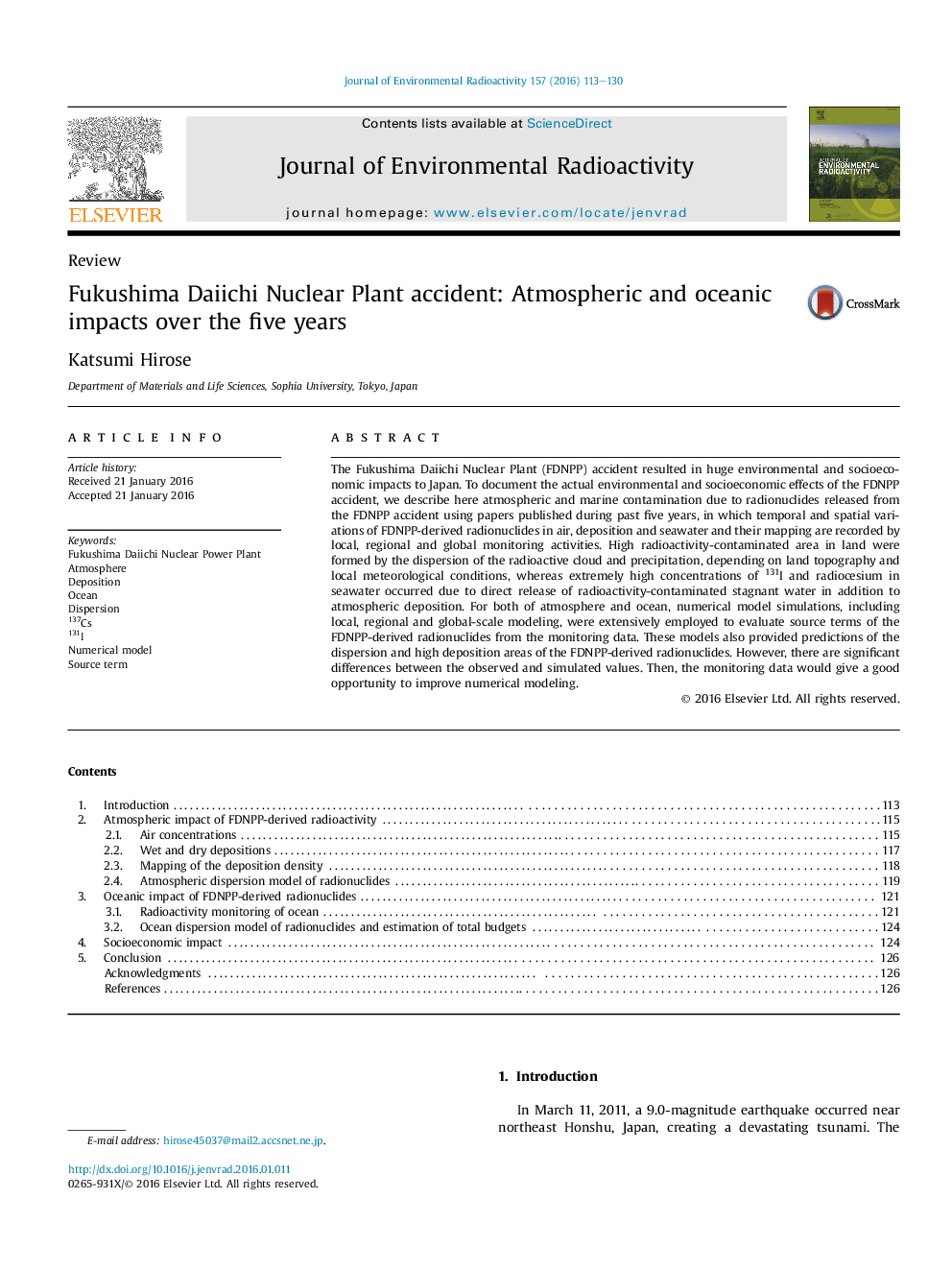| Article ID | Journal | Published Year | Pages | File Type |
|---|---|---|---|---|
| 8081908 | Journal of Environmental Radioactivity | 2016 | 18 Pages |
Abstract
The Fukushima Daiichi Nuclear Plant (FDNPP) accident resulted in huge environmental and socioeconomic impacts to Japan. To document the actual environmental and socioeconomic effects of the FDNPP accident, we describe here atmospheric and marine contamination due to radionuclides released from the FDNPP accident using papers published during past five years, in which temporal and spatial variations of FDNPP-derived radionuclides in air, deposition and seawater and their mapping are recorded by local, regional and global monitoring activities. High radioactivity-contaminated area in land were formed by the dispersion of the radioactive cloud and precipitation, depending on land topography and local meteorological conditions, whereas extremely high concentrations of 131I and radiocesium in seawater occurred due to direct release of radioactivity-contaminated stagnant water in addition to atmospheric deposition. For both of atmosphere and ocean, numerical model simulations, including local, regional and global-scale modeling, were extensively employed to evaluate source terms of the FDNPP-derived radionuclides from the monitoring data. These models also provided predictions of the dispersion and high deposition areas of the FDNPP-derived radionuclides. However, there are significant differences between the observed and simulated values. Then, the monitoring data would give a good opportunity to improve numerical modeling.
Keywords
Related Topics
Physical Sciences and Engineering
Energy
Nuclear Energy and Engineering
Authors
Katsumi Hirose,
